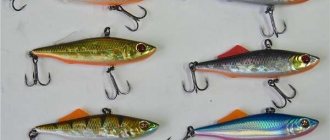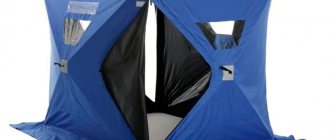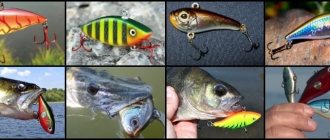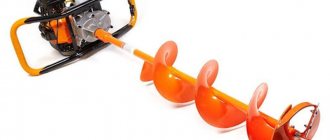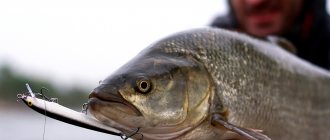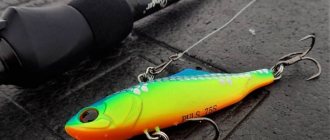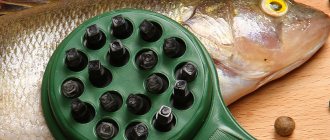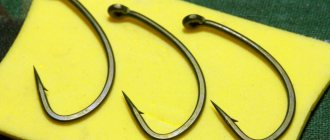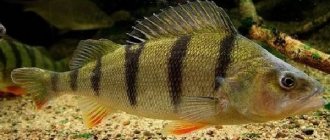A fishing knife is the most important attribute of any fisherman. It performs a huge number of functions: cutting tangled fishing line, cutting off a branch, cutting up the catch, setting the table, and this is just the beginning of a huge list. In Russia there is an enormous number of rivers and all kinds of reservoirs. It is not surprising that fishing is one of the most popular national pastimes: for some it is just a hobby, for others it is part of life.
Fisherman's knife.
The history of the origin of fishing knives
The history of the origin of such a tool as a fishing knife dates back to the times of primitive people, for whom fishing was one of the ways of subsistence.
In those days, the rivers were overflowing with fish, which could be caught simply by sticking a stick into the water.
A sharp bone was attached to the end of such a stick, with the help of which the catch was held and not torn off. So something like a harpoon appeared. Historians claim that it was this invention, through modernization and improvement, that was transformed into a modern knife.
Bone was used first, then metal. Also, after a certain period of time, the so-called ouds with steel hooks and a fishing knife appeared. Then it looked like a small plate with one sharpened side; such a device was convenient for gutting fish.
The fishing rods were transformed into all kinds of fishing rods and seines of today, but the fisherman’s knife remained an important piece of his equipment.
Bulat steel
Damask steel knives are most often used for making souvenir and camping knives, which is due to both the appearance and density of the product itself. Hardness varies between 60-68, which is quite the optimal indicator among similar representatives of this metal. An aristocratic gray tint, grainy finish, high degree of recoil and elasticity are among the permanent advantages of a knife of this type. Although we should not forget that this type of steel requires periodic cleaning and regular maintenance.
Damascus steel
Until recently, Damascus steel was not as common as it is today. But due to their characteristics and appearance, which is a feature of this type of steel, knives in this design have found their consumer and are quite relevant and in demand on the analogue market. Regarding the shade of the metal, depending on the technology of forging and hardening the metal, the blade can have up to 15 different color transitions from dark gray to almost white. However, these knives are not super durable and rank last on this list in terms of strength and durability.
Stamped steel
Due to the special technology of making a knife from steel using metal stamping, specialists and experts do not recommend using the tool for striking or chopping purposes. Despite this, knives of this type are easy to sharpen, have a high degree of protection against rust and corrosion, and do not react with acids and chemicals, like other options.
Tool steel
Tool steel, in turn, is divided into several more subtypes, which, depending on the purpose of use, can have a hardness from 58 to 69 on the strength scale. The most common knife in everyday life and production is considered to be a knife made of forged stainless steel. The name speaks for itself, and you can distinguish this knife from others using the mirror reflection on the blade, which is always present in this version.
Despite the fact that each steel option is suitable for a particular type of activity, it is important to choose the right not only metal, but also the design of the tool. Its handle, which must be strong and comfortable, can tell you a lot about a knife. Well, if the knife is selected for hunting and fishing, then additional teeth on the upper side of the blade, a hook or a small striking section for breaking hard materials on the back of the handle will always come to the rescue in difficult situations.
Types of fishing knives
Nowadays, fishing knives are presented in a wide range of models, in which anyone can find a tool that satisfies all their needs. Before moving on to choosing a tool, it is necessary to accurately determine the purpose of its use. After all, each blade has its own characteristics and functions.
Let's look at the six most famous and beloved types of fishing knives by fishermen and try to highlight their strengths and weaknesses.
Beluga knife type
These are small knives whose purpose is to cut large fish. It has a narrow blade with straight bevels, the butt is sharpened specifically for removing scales.
Such tools are made from steel grade 95x18. Blade thickness – 2 mm. They are also equipped with a stopper to prevent fingers from slipping.
Beluga knife type.
Knife type "Splinter"
An excellent option for those. Who, in addition to fishing, is interested in hunting waterfowl. This model is universal, therefore it applies to both knives for fishing and hunting.
This is a small blade, very light, and has a classic, rather narrow blade shape. Made from steel grade 100X13M. The handle is very comfortable and ergonomic, making it easy to gut fish of various sizes and cut up waterfowl.
Knife type "Splinter".
Knife type "Gudgeon"
This knife is medium in size, relatively light, but very durable. The blade is made of steel grade 95x18. It has a very sharp blade designed to rip open any size catch.
The standard thickness does not exceed 2.4 mm. The blade is thin, formed by thin lens-shaped slopes that originate in the middle of the blade. The butt is slightly pressed against the tip.
Knife type "Gudgeon".
Skewering knife
Among Far Eastern sailors, the fishing shear knife – a “workhorse” – is especially popular. The product is made in oriental style. There is a small hook on the butt, like on a harpoon for ripping open fish.
This hook is inserted into the anus of the fish and jerked sharply towards itself, then the head is cut off with the same instrument and the entrails are removed. A characteristic feature is the weighted handle.
Skeleton knife for fishing.
Fisherman's folding knife
A folding fishing knife is the best option in terms of practicality and economy. It can consist of several blades serving different purposes, and be equipped with a bottle opener, screwdriver, or even a fork and spoon. Such knives do not need a sheath; their blade fits into the handle. When folded they are very compact.
Fisherman's folding knife.
Japanese knives
The main task of this type of knives is cutting fish and finishing fillets. To do this, they are equipped with a very thin and sharp blade, which is particularly shock-absorbing and elastic.
Residents of coastal countries, for whom the basis of their diet is fish, could not help but create the most convenient knife for these purposes. The Japanese knife is highly valued in many countries.
Japanese fisherman's knife.
What should a real fishing knife be like?
Knives have served humanity faithfully since the Stone Age. And if the stick and cobblestones have long been replaced by more complex devices, then the knife is still an indispensable assistant for every person. It doesn’t matter whether it’s a fisherman, a hunter or a housewife - no one can do without a knife.
Many people are careless when choosing a knife, buying the cheapest models. This is a completely wrong approach, since a good knife simply cannot be cheap. For those who have spent their entire lives using Chinese kitchen utensils purchased at the local market or the nearest supermarket, I would simply advise trying to cook dinner once using a normal branded knife. It is not necessary to buy a Japanese model for 10,000 rubles; a simple Tramontina with a white handle (this is the “professional craftsman”) is enough.
As for the purpose of this important tool, not everyone knows that there is a special knife for each type of activity. There are, of course, universal models, but it is better to use specialized blades, especially if you have to work a lot with such a knife.
Today we want to tell you about what a real fishing knife should be. You can tell me that when fishing, a knife is not the most important thing, as long as you catch fish, but I will have to disagree with you. A fisherman's knife should have some of its own characteristics.
What blade should a fisherman's knife have?
First you need to decide which blade should be on a universal fishing knife. Let's start with steel. Although previously fishing knives were made from ordinary carbon, now it is better to opt for stainless steel. If you are not satisfied with the hardness of simple stainless steel, then look for something better. There are excellent powdered stainless steels, although you should not take such a blade fishing - the likelihood of losing it is too high. You can take something from AUS-8 or 440C. Only it’s not entirely stainless steel, so you still have to take care of the blade.
But if you are used to taking care of your knives, then you can take an ordinary Finnish puukko knife made of carbon when fishing; Finnish fishermen still use such blades and do not complain. I also take a simple carbon Mora for fishing, nothing rusts. True, I etched the blade, so it is resistant to corrosion.
Signs of fishing knives
Every fisherman, when he hears about a fishing knife, imagines something different, but no matter how much one would like to have an ideal, universal device, it is not easy to find one. A quality tool must be functional and practical, and also have:
- little weight;
- compactness, impact resistance and corrosion resistance;
- have a bright design;
- hold sharpening for a long time;
- fits securely in the sheath;
- have a comfortable ergonomic handle.
Rules for choosing a great knife
The huge variety of fishing knives makes it very difficult to choose, since upon entering the store your eyes immediately run wide. Before you go shopping for your treasured weapon, you need to clearly define the requirements that apply to it and compare them with your goals and objectives.
It’s not that difficult to figure everything out, it just takes a little time. Let's put everything into pieces.
Form and purpose
Each blade shape of a fishing knife has its own purpose. There are three main forms:
- Fillet knife. Equipped with a narrow and thin blade, very flexible. Many models are equipped with a serrator on the butt. The main task is to separate the meat from the bone.
- Cutting fisherman. Equipped with a thick short blade, used for chopping bones and gutting.
- Classical. Multifunctional, performs a variety of tasks, not as good as highly specialized ones, but several at once.
Steel
The steel from which the blade of a fishing knife is made must have optimal hardness and corrosion resistance. Recommended hardness is 55-60 units on the Rockwell scale. If the metal is softer, the cutting edge will have to be constantly sharpened.
A blade that is too hard loses its flexibility and can break upon impact; moreover, it is difficult to sharpen in field conditions. Anti-corrosion resistance is achieved by using various alloys.
The higher the content of carbon compounds, the more the steel is subject to corrosion.
Handle
The handle of the knife should fit securely and comfortably in the fisherman’s hand. When choosing, first of all, you should pay attention to the material; it should be tactilely pleasant.
A handle made of natural materials - wood or birch bark - is much more pleasant to the touch than synthetic ones. In addition, such a massive handle turns the tool into a floating knife. The float knife will not sink at the most crucial moment and will serve its owner longer.
But do not forget that when cutting fish, wood absorbs and retains a specific odor . In this case, plastic or dense rubber is a much more profitable material that is easier to care for.
Sheath
The sheath is one of the most important design elements of a bladed weapon; it protects the blade from external influences and protects others from careless handling of a sharp blade.
An ideally made sheath, when the blade enters, makes a characteristic sound, indicating correct fixation.
Preference should be given to a material that will ensure long-term and reliable operation of the knife. The sheath is made from the following materials:
- leather;
- Kydex;
- Cordura.
Fishing knives of various types.
How to choose a hunting knife as a gift
The process of choosing a hunting knife as a gift is not much different from a simple selection based on the basic parameters. With your gift, you want to awaken the most positive, festive emotions. Choose any knife you like based on the shape and material of the blade and handle. The catalog contains knives with designs on the blades made by etching and artistic decorative inserts on the handle. And most importantly - gift wrapping - it will make any hunting knife a gift!
Believe me, any hunting knife will always be a pleasant and necessary gift for any man, even if he is not a hunter! And, even if the recipient already has several high-quality knives, a new knife will never be superfluous!
What to consider when buying a knife
When purchasing a fishing knife, special attention is paid to the following criteria:
- The steel should have medium hardness, then the knife will not split under heavy load, and will not constantly become dull.
- Carbon steel blades are not suitable for fishing - they rust quickly.
- The best parameters for a fishing tool are thin, flexible, narrow with a straight blade.
- The butt should not be too thick, otherwise the product will be too heavy.
- The knife should be of medium size in order to perform the maximum number of functions.
- The main parameter for the handle is a comfortable fit in the hand. It should not slip, and the material should not get wet or absorb odors.
